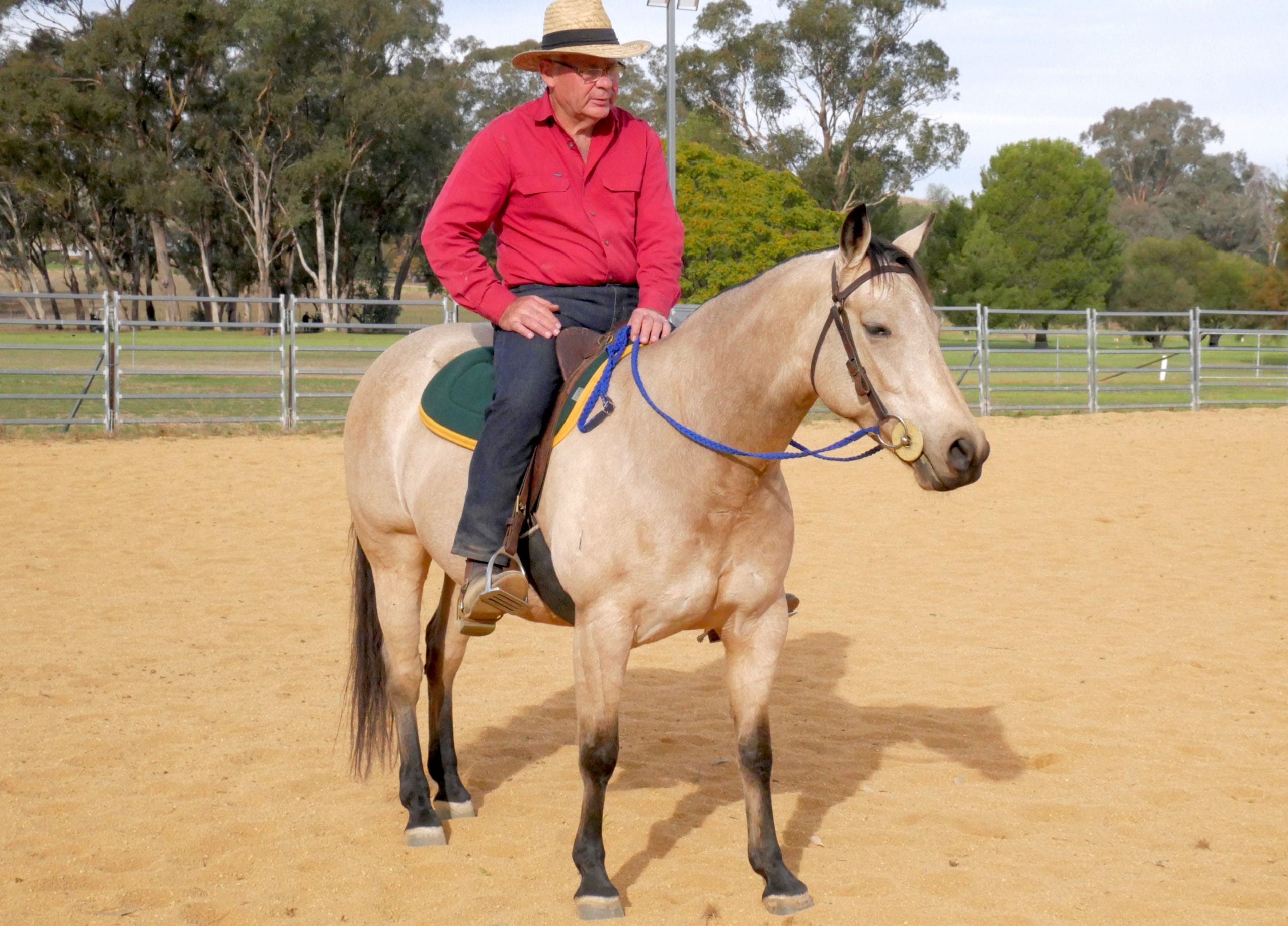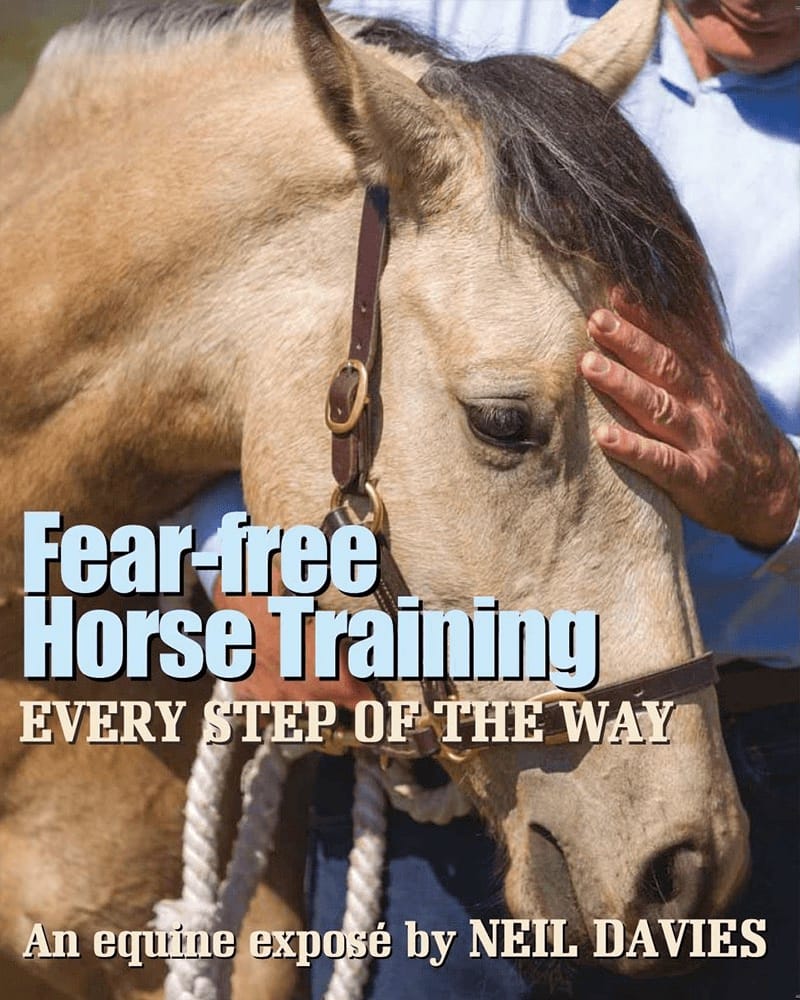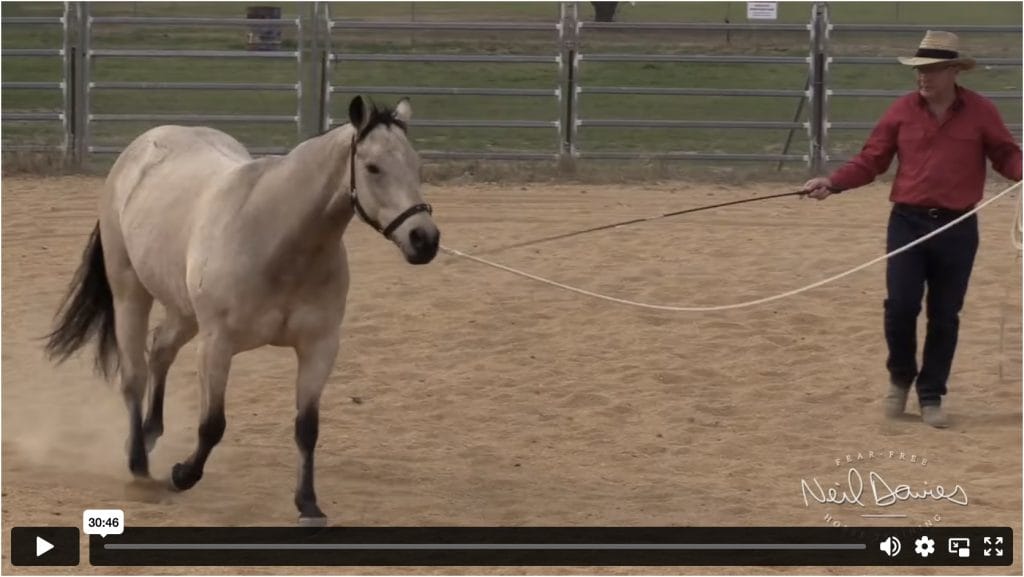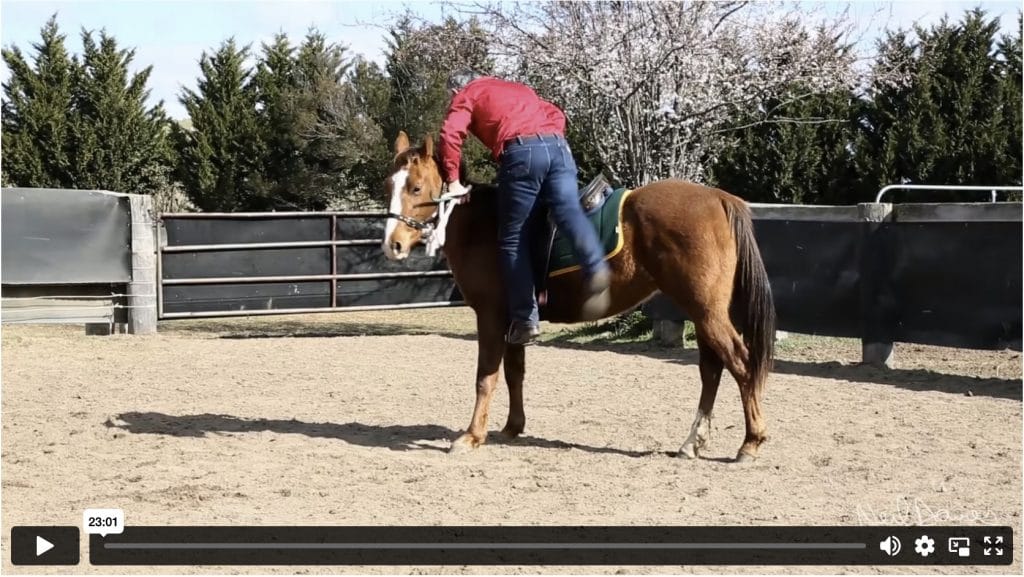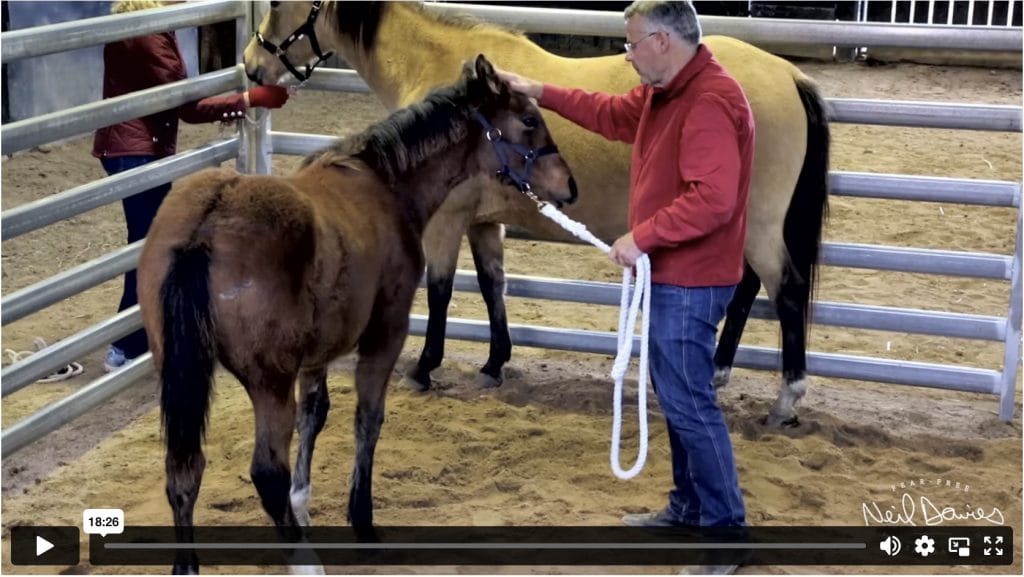Every horse’s world must be predictable before he can relax.
Horses must always know what the outcome of their actions will be.
From the very first lesson, I rub every horse’s head.
I teach every horse that when he has his head with me it’s a pleasant experience – a rub around his head, neck and ears.
By using this simple rub, every horse learns to switch off and relax when his head is with me.
Similarly, when I tap a horse’s rump, he learns to relieve the pressure of the tapping by moving forward.
This becomes predictable to the horse.
He knows what to expect and so he can relax.
With a few simple lessons, every horse can predict what will happen when he has head with me –
a pleasant experience.
He can also predict what will happen when I raise the stick to his rump –
an unpleasant experience, if he doesn’t move forward.
From a horse’s point of view, this is very logical and consistent.
It makes sense to the horse and so he can relax.
If today you make a pleasant experience when your horse has head with you and tomorrow you chase him when his head is with you, the horse’s world is no longer predictable.
If you’re inconsistent, your horse won’t know what to expect.
See this demonstrated step-by-step in my Fear-free Fundamentals Online Clinic.
Similarly, if your horse moves forward and you keep tapping his rump, he’ll become worried and confused.
He no longer knows how to relieve the pressure of being tapped with the stick.
A horse can’t relax in this situation because his world has become unpredictable.
Every horse must understand how to relieve any pressure that you apply.
Equally, every horse must know when he can switch off and relax.
It’s just as important for a horse to understand how to relieve pressure, as understand how to have a pleasant experience.
When a horse is nervous, worried and upset, it’s because his world is confusing and unpredictable.
It’s not because he’s ‘highly strung’ or needs to ‘calm down’.
The only way you can teach such a horse to relax is by being definite and consistent.
You may have to be firm at the right time and you must also show the horse that there’s always a place where he can switch off and relax – when his head is with you.
You must always have a definite plan of what you want the horse to do – a definite speed and a definite circle that you want the horse to walk.
Without a definite plan from you, your horse can’t relax because his world is inconsistent and unpredictable.
Go to any equestrian event and you’ll see someone with a nervous, worried horse.
Often the handler leads the horse around and strokes his neck, thinking this will calm him.
The horse is allowed to move hither and thither, in the hope that he’ll soon settle down.
Whether the horse moves, stands, runs or walks, the handler strokes the horse in an attempt to calm him.
In this situation, a horse can’t ‘settle down’ because there’s no definite plan –
no definite circle to walk and no definite place to relax.
Such a horse needs to learn to stand and keep his head with the handler.
Then both horse and handler have a place to relax in times of stress.
The horse must also be taught to walk a definite circle at a definite speed.
A horse can relax only when he learns to concentrate and walk exactly where he’s asked, at the speed he’s asked.
Then his world is consistent and predictable.
If your horse is nervous and worried, you must teach him these simple lessons.
Then there’s something simple and easy for your horse to concentrate on and his world will be consistent and predictable.
Remember, it’s up to you to teach your horse to relax.

